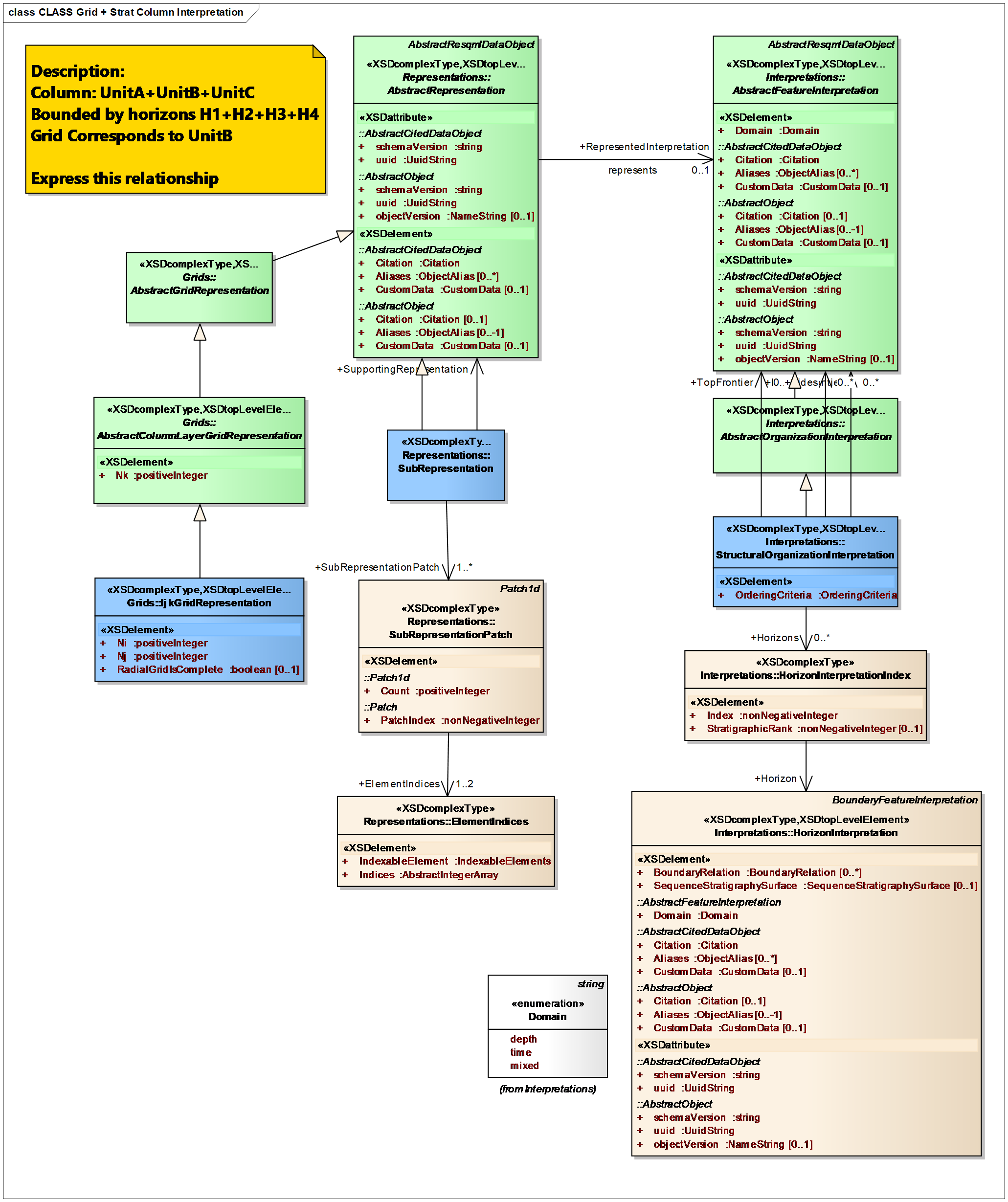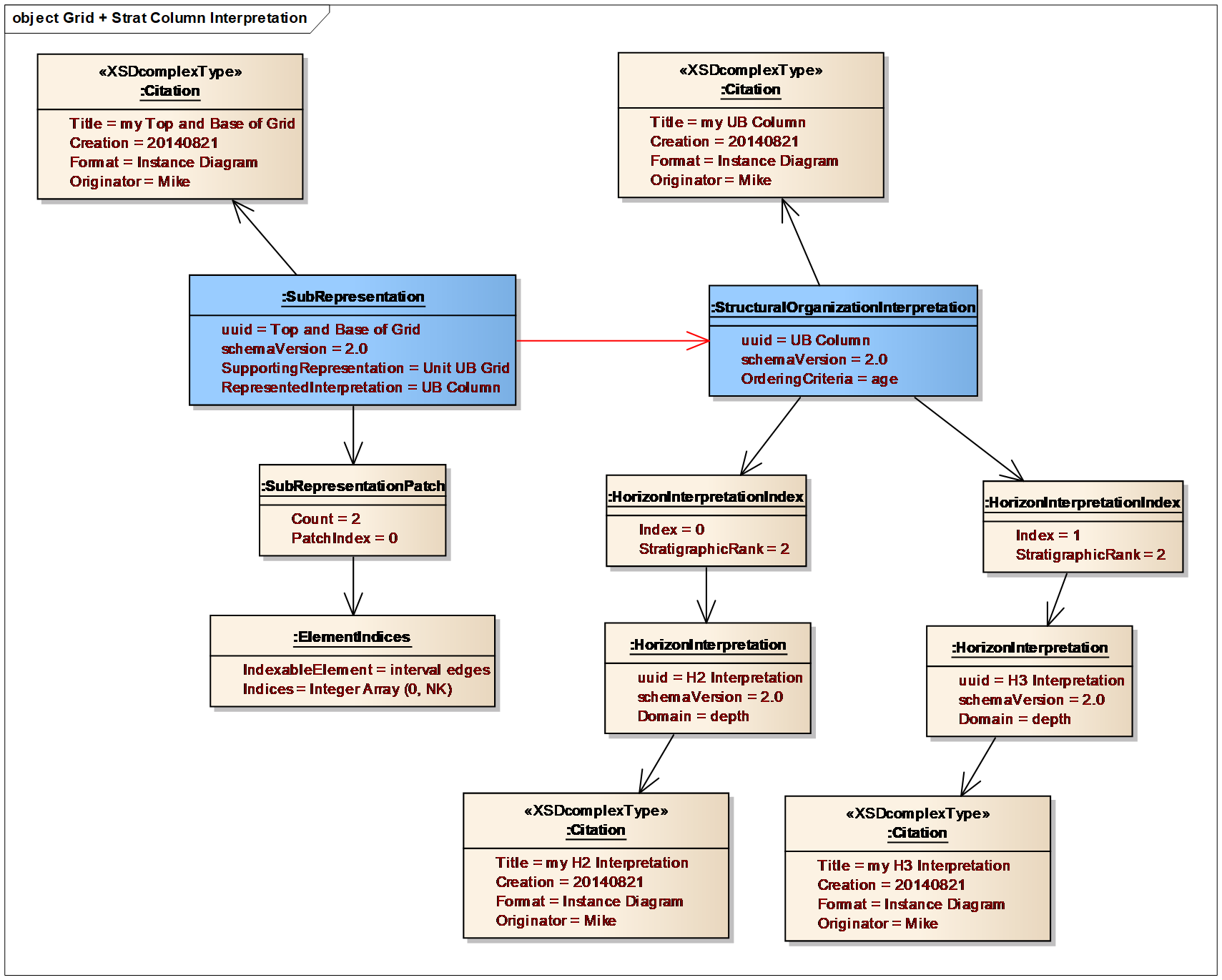11.19.4 Stratigraphic Column Representations on an IJK Grid
| Topic Version | 1 | Published | 09/11/2015 | |
| For Standard | RESQML v2.0.1 | |||
The following example ( Figure 11.19.4-1 , Figure 11.19.4-2 , Figure 11.19.4-3 ) is used to demonstrate how to specify a relationship between the interval edges of a grid and the horizons of a stratigraphic column. In this specific example there are three stratigraphic units (Unit A, Unit B, Unit C) bounded by four horizons (H1, H2, H3, H4). The reservoir grid has been built only for Unit B, which in this case, is the only unit with appreciable productivity. This example shows how to use a stratigraphic column to express the relationship between the top and base of the reservoir grid and horizons H2 and H3, which bound Unit B. For the grid this involves constructing a subrepresentation of the two interval edges of the grid. For the stratigraphic column this involves constructing a column of stratigraphic rank two, consisting of Unit B and horizons H2 and H3. A more complete stratigraphic column of rank one also exists, consisting of all three units and all four horizons. However, the rank one stratigraphic column is not referenced directly, other than implicitly through the shared horizon interpretations and the statement of the differing ranks of the stratigraphic columns.


